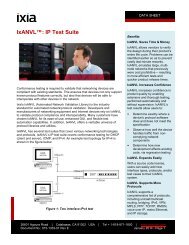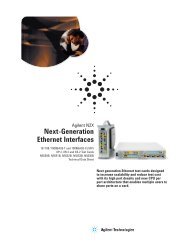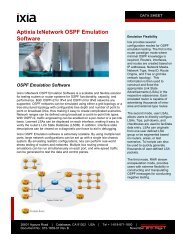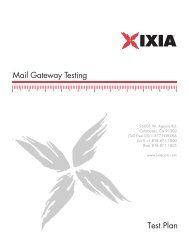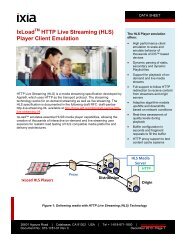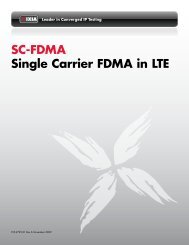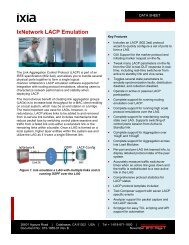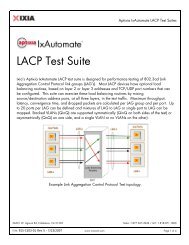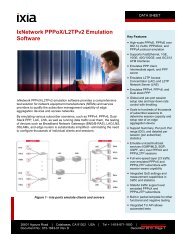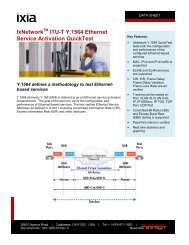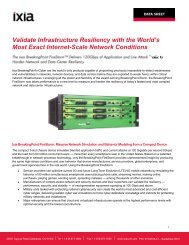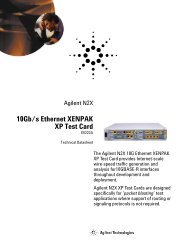Ixia Black Book: 802.11ac Wi-Fi Benchmarking
Ixia Black Book: 802.11ac Wi-Fi Benchmarking
Ixia Black Book: 802.11ac Wi-Fi Benchmarking
Create successful ePaper yourself
Turn your PDF publications into a flip-book with our unique Google optimized e-Paper software.
Introduction to <strong>802.11ac</strong> Performance TestingThe second generation of IEEE <strong>802.11ac</strong> is expected to introduce multiuser MIMO (MU-MIMO) capabilities that are a significant step towards true "wireless switching", but this isunlikely to become feasible for some time, and in any case is not yet defined within theIEEE <strong>802.11ac</strong> draft standard as of the date of publishing this black book.Test Challenges of IEEE <strong>802.11ac</strong>Chipset and system designs around a new standard are prone to issues related tosupport of legacy standards for backwards compatibility, and implementation of thenew standard. Performance and functionality cannot be assured by design only. Tomeet the demanding requirements of <strong>802.11ac</strong>, the components and drivers havebeen substantially changed from earlier chipset designs. This means that the verificationof all features, modes and functions set forth by the both 802.11a/b/g and 802.11nsections of the standard must be performed on the Access Point and associated WLANcontroller.The three most important questions to be answered about IEEE <strong>802.11ac</strong> are:• Are you actually getting the capacity increase that you expect from the newIEEE <strong>802.11ac</strong> APs?• Can your IEEE <strong>802.11ac</strong> AP interwork with previous IEEE 802.11n and IEEE802.11a/b/g/n clients?• Can the theoretical data rate increase actually benefit client devices?Clearly, the most significant reason to adopt IEEE <strong>802.11ac</strong> is the substantial increase inAP bandwidth capacity. Therefore, it is essential to verify that the AP does in factsupport the rated bandwidth, as close to the theoretical maximum as possible, under allexpected circumstances. This can only be done by running exhaustive benchmark teststhat measure the throughput and forwarding rate of the system (APs and WLANcontrollers) under different conditions, such as frame sizes, and numbers of clients.Further, these tests should be performed with different types of traffic (like upstream,downstream, UDP, TCP).To make the leap to the new technology, customers must be confident that currentnetwork performance will not be compromised, while still supporting a definiteperformance gain that is worth the cost and risk of changeover. Thus it is necessary toverify that IEEE <strong>802.11ac</strong> APs work flawlessly in IEEE 802.11a/b/g/n legacy modes,without destroying the performance of either the legacy or new IEEE <strong>802.11ac</strong> devices.The supersized channel bandwidths employed by IEEE <strong>802.11ac</strong> (80 MHz and up) meansthat complex radio resource management (RRM) algorithms, dynamic channelassignment, and transmit power control have to be employed by the APs and WLANcontrollers to prevent co-channel and adjacent channel interference with the legacydevices that are not aware of the IEEE <strong>802.11ac</strong> system.PN 915-2634-01 Rev A December 2012 4



